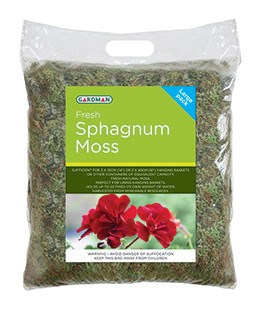New products at Crocus
by Sarah - July 15th, 2014.Filed under: Crocus, New Products.
Crocus has these new products today
Rosa Summer Song (‘Austango’) (PBR) (rose Summer Song (shrub)) £26.50
Position: full sun Soil: fertile, humus-rich, moist, well-drained soil Rate of growth: fast-growing Flowering period: June to September Other features: excellent cut-flowers Hardiness: fully hardy New for 2014, this beautiful David Austin rose . A wonderful addition to the rose garden. All our roses are grown in an open field and then dug up when the weather conditions are right in October or November. Some suppliers send out their roses as ‘bare root’ plants (ie without pots or compost), but we pot ours up as it helps to keep the roots hydrated and in good condition. As they are dormant throughout the winter, they will not produce any new roots until spring, so don’t be surprised if the compost falls away from the roots when you take them out of their pots. The roses can be kept in their pots throughout the winter provided they are kept well fed and watered, however ideally they should planted out as soon as possible. They will already have been cut back so no further pruning will be required, apart from snipping off any tips that have died back. Routine pruning can begin in late winter the year after planting. Garden care: If planting in winter, choose a frost-free spell when the soil is not frozen. Roses are quite deep-rooted plants so dig a deep hole roughly twice as wide as the plants roots and mix in a generous amount of composted organic matter. A top-dressing of a general purpose fertiliser can be worked into the surrounding soil and we also recommend using Rose Rootgrow at this stage to encourage better root development. This is particularly important when planting into a bed where roses have previously been grown as Rose Rootgrow is said to combat rose sickness (aka. replant disease). Remove the plants from their pots and gently spread out the roots before placing them in the centre of the hole. Try to ensure that the ‘bud union’ (the point where the cultivated rose has been grafted onto the rootstock, and from where the shoots emerge) is at soil level. You can judge this quite easily by laying something flat, like a spade handle or bamboo cane, across the top of the hole. When they are at the right height, back-fill the hole, firming the soil down gently before watering the plant well. Water generously until well established, and apply a specialist rose fertiliser (following the manufacturers instructions) each spring. They will also benefit from a generous mulch
Rosa Olivia Rose Austin (‘Ausmixture’) (PBR) (rose Olivia Rose Austin (shrub)) £26.50
Position: full sun Soil: fertile, humus-rich, moist, well-drained soil Rate of growth: fast-growing Flowering period: June to September Other features: excellent cut-flowers Hardiness: fully hardy New for 2014, this beautiful David Austin rose . A wonderful addition to the rose garden. All our roses are grown in an open field and then dug up when the weather conditions are right in October or November. Some suppliers send out their roses as ‘bare root’ plants (ie without pots or compost), but we pot ours up as it helps to keep the roots hydrated and in good condition. As they are dormant throughout the winter, they will not produce any new roots until spring, so don’t be surprised if the compost falls away from the roots when you take them out of their pots. The roses can be kept in their pots throughout the winter provided they are kept well fed and watered, however ideally they should planted out as soon as possible. They will already have been cut back so no further pruning will be required, apart from snipping off any tips that have died back. Routine pruning can begin in late winter the year after planting. Garden care: If planting in winter, choose a frost-free spell when the soil is not frozen. Roses are quite deep-rooted plants so dig a deep hole roughly twice as wide as the plants roots and mix in a generous amount of composted organic matter. A top-dressing of a general purpose fertiliser can be worked into the surrounding soil and we also recommend using Rose Rootgrow at this stage to encourage better root development. This is particularly important when planting into a bed where roses have previously been grown as Rose Rootgrow is said to combat rose sickness (aka. replant disease). Remove the plants from their pots and gently spread out the roots before placing them in the centre of the hole. Try to ensure that the ‘bud union’ (the point where the cultivated rose has been grafted onto the rootstock, and from where the shoots emerge) is at soil level. You can judge this quite easily by laying something flat, like a spade handle or bamboo cane, across the top of the hole. When they are at the right height, back-fill the hole, firming the soil down gently before watering the plant well. Water generously until well established, and apply a specialist rose fertiliser (following the manufacturers instructions) each spring. They will also benefit from a generous mulch
Rosa The Lady of the Lake (‘Ausherbert’) (PBR) (rose The Lady of the Lake (shrub)) £26.50
Position: full sun Soil: fertile, humus-rich, moist, well-drained soil Rate of growth: fast-growing Flowering period: June to September Other features: excellent cut-flowers Hardiness: fully hardy New for 2014, this beautiful David Austin rose . A wonderful addition to the rose garden. All our roses are grown in an open field and then dug up when the weather conditions are right in October or November. Some suppliers send out their roses as ‘bare root’ plants (ie without pots or compost), but we pot ours up as it helps to keep the roots hydrated and in good condition. As they are dormant throughout the winter, they will not produce any new roots until spring, so don’t be surprised if the compost falls away from the roots when you take them out of their pots. The roses can be kept in their pots throughout the winter provided they are kept well fed and watered, however ideally they should planted out as soon as possible. They will already have been cut back so no further pruning will be required, apart from snipping off any tips that have died back. Routine pruning can begin in late winter the year after planting. Garden care: If planting in winter, choose a frost-free spell when the soil is not frozen. Roses are quite deep-rooted plants so dig a deep hole roughly twice as wide as the plants roots and mix in a generous amount of composted organic matter. A top-dressing of a general purpose fertiliser can be worked into the surrounding soil and we also recommend using Rose Rootgrow at this stage to encourage better root development. This is particularly important when planting into a bed where roses have previously been grown as Rose Rootgrow is said to combat rose sickness (aka. replant disease). Remove the plants from their pots and gently spread out the roots before placing them in the centre of the hole. Try to ensure that the ‘bud union’ (the point where the cultivated rose has been grafted onto the rootstock, and from where the shoots emerge) is at soil level. You can judge this quite easily by laying something flat, like a spade handle or bamboo cane, across the top of the hole. When they are at the right height, back-fill the hole, firming the soil down gently before watering the plant well. Water generously until well established, and apply a specialist rose fertiliser (following the manufacturers instructions) each spring. They will also benefit from a generous mulch
Camellia ‘Volunteer’ (volunteer camellia) £24.99
Position: partial shade (but not east-facing) Soil: moist but well-drained, humus-rich, acid soil (or ericaceous compost for container-grown specimens) Rate of growth: average Flowering period: January to March Hardiness: fully hardy Garden care: To prevent damage to the emerg ing buds and flowers protect from cold, dry winds and early morning sun. Water e stablished plants in dry weather to prevent bud drop. Apply a balanced liquid fe rtiliser in mid-spring and again in June. Top-dress annually with shredded bark or well-rotted leaf mould. After flowering lightly trim or prune any branches th at spoil the appearance of the plant.
Buddleja Sugar Plum (‘Lonplum’) (PBR) (butterfly bush ‘Sugar Plum’) £14.99
Position: full sun Soil: fertile, well-drained soil Rate of growth: fast growing Flowering period: July to September Hardiness: fully hardy Garden care: Prune back hard in March, removing all of the previous year’s growth to three or four buds.
Festuca glauca Intense Blue (‘Casblue’) (PBR) (blue fescue) £9.99
Position: full sun Soil: well-drained soil Rate of growth: average Flowering period: June to July Hardiness: fully hardy Garden care: Comb through the plant with your fingers in winter to remove dead foliage. Container-grown specimens should be watered well when the y are establishing. Plants need replacing every few years as they become tatty- looking.
Fresh sphagnum moss £8.99
Harvested from renewable sources in New Zealand. Extremely long lasting and highly water absorbent. Naturally free from weeds and insects. The Fresh Sphagnum Moss can cover 3 x 14 baskets or 2 x 16 baskets.
x Heucherella ‘Solar Eclipse’ (coral bells) £7.99
Position: partial shade Soil: fertile, moist or well-drained soil Rate of growth: average Flowering period: June to August Hardiness: fully hardy A wonderful container plant, it will also look attractive as an understory plant on a woodland floor. Garden care: Remove tatty foliage in autumn. Lift and divide clumps every couple of years in early autumn and replant with the crown just above the surface of the soil. Apply a generous 5-7 cm (2-3 in) mulch of well-rotted organic matter around the crown of the plant in spring.
Astrantia Superstar (syn ‘White Giant’) (masterwort) £6.99
Position: full sun or partial shade Soil: fertile, moist, preferably humus-rich soil Rate of growth: average to fast-growing Flowering period: June to August Flowers: greenish- white Other features: the flowers are excellent for cutting and drying Hardiness: fully hardy The large, greenish-white flowerheads look like pincushions surrounded by a spidery ruff of green-tinted, white bracts. These are produced en masse above the lobed, dark green leaves from early summer to autumn adding bobbles of colour to the border. Astrantias have become the ‘darlings of the designers’ in recent years as they lend themselves to most styles of planting, and mix happily with most plants. Garden care: Incorporate plenty of organic matter when planting and water well in dry weather especially newly established plants. Lift and divide large clumps in early spring and apply a generous 5-7 cm mulch of well-rotted manure or garden compost around the plant. Divided specimens may take some time to establish since they don’t like having their roots disturbed.















